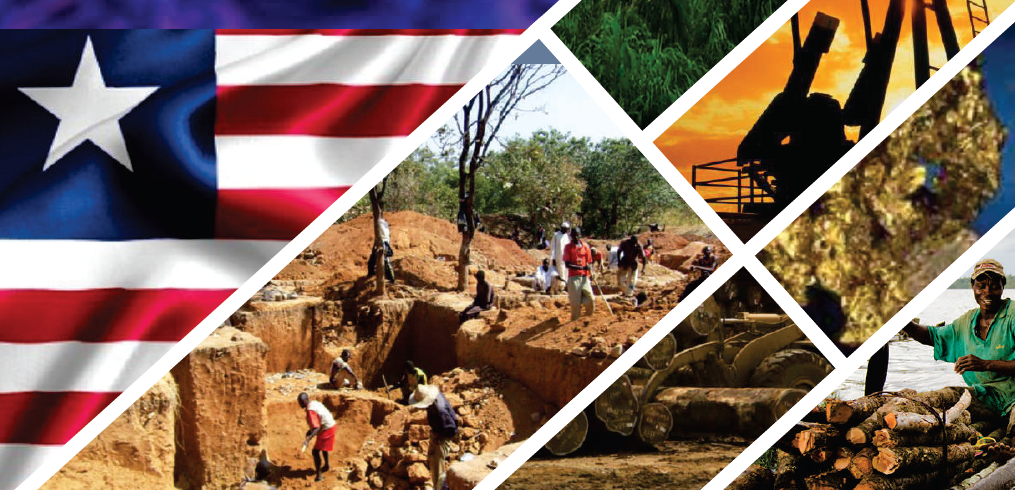
INTRODUCTION
Natural resources have long been a mainstay of the Liberian economy for nearly a century. The country
is blessed with rich endowments in gold, diamond, bauxite, timber and iron ore to name but a few.
Along with natural rubber, by mid-20th century, natural resources had attracted large amounts of
foreign companies into the country with combined investments reaching nearly one billion United
States Dollars. In the modern 21st century era beginning with the period after the civil war, the country
leveraged on this natural resource endowment to attract both foreign investments in order to spur
economic growth to help in the rebuilding of a nation ravaged by 14 years of civil war. Official statistics
put the amount of investments attracted during the period between 2006 and 2012 at 16 billion
United States Dollars (Paczynska, 2016). These were largely due to investments in iron ore and timber
concessions and a dive into the yet underexplored oil and gas sectors.
The increase in foreign investments substantially raised gross domestic product (GDP) from US $1.1
billion in 2006 to US $3.2 billion in 2019 and government revenue from US$ 80 million in 2006 to US$
474 million in 2020 (National Budget of Liberia, 2019-2020). The additional revenue contributed to
expenditures in basic social services such as the building of roads, schools and hospitals. Despite this
fact, it can be said that the natural resource sector is a volatile area vulnerable to the boom and bust
of international market systems symbolic of the negative impact the global financial crisis of 2007 had
on the Liberian economy. In 2007, when world markets crashed thereby decreasing demand for
natural resources especially in China, the Liberian economy suffered likewise and extractive industries
revenue totaled US$ 29 million.
In recent years, regional and global health pandemics have added to the regular boom and bust of
financial markets leaving an adverse impact on the natural resources sector of the country. The Ebola
Virus Disease (EVD) outbreak in 2014 had a formidable impact on Liberia’s economic recovery process
and significantly eroded most of the post-war economic gains that were made. Now the novel
Coronavirus disease (COVID-19), a contagion also known as SARS-CoV-2 was first identified
in Wuhan, China, in December 2019. The virus has spread to nearly every part of the world leaving in
its wake over 2 million people dead and millions more in hospitals. The first confirmed case of the
virus in Liberia was reported by the National Public Health Institute of Liberia (NPHIL) on March 16,
2020 when a government official returning from a conference in Switzerland tested positive. Days
after, several cases were reported and since then, the disease has spread to all counties of Liberia. As
at January 12, 2021, a total of 1,876 cases had been confirmed with 84 deaths (National Public Health
Institute of Liberia Daily Case Update).
In order to curtail the spread of the virus, President George M. Weah declared a State of Emergency
on April 10, 2020 along with a national lockdown lasting for an initial period of 90 days. Subsequent
measures were announced through the Ministry of Health (MOH) and NPHIL including the closure of
schools, ban on public gatherings, and closure of all borders and the suspension of flights into and out
of the country. Curfew was also imposed lasting from 3:00 PM daily till 6:00 AM the next day. With
the institution of these measures, all aspects of life in Liberia were affected. Some businesses closed,
most civil servants were sent home and the economy virtually came to a halt.